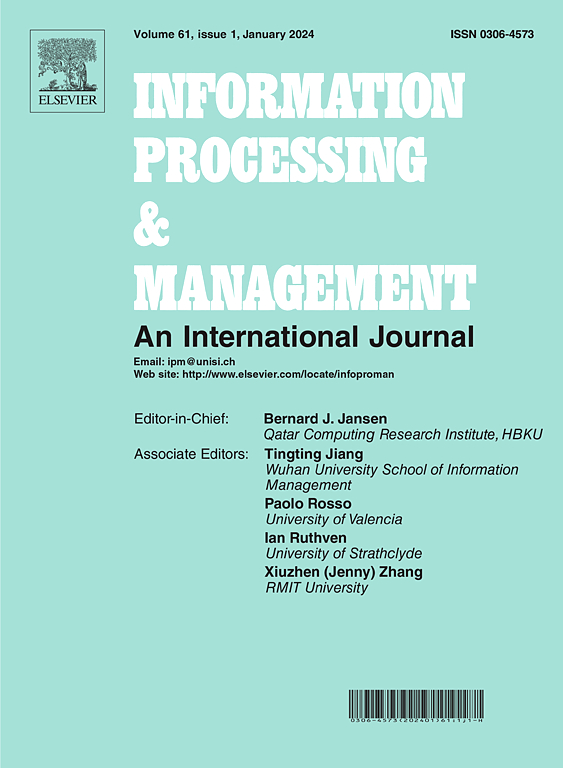A three-way efficacy prediction method fusing temporal composite rough set and hybrid machine learning models on multigranulation temporal hybrid attribute information system
IF 6.9
1区 管理学
Q1 COMPUTER SCIENCE, INFORMATION SYSTEMS
引用次数: 0
Abstract
Efficacy prediction is a key research topic in clinical management practice. To address the general efficacy prediction problem characterized by multigranularity, temporality, and incompleteness, this study proposes a three-way efficacy prediction method that integrates a temporal composite rough set and a hybrid machine learning model (TCRS-HML). First, a multigranulation temporal hybrid attribute information system (MTHAIS) is constructed to handle hybrid attributes exhibiting these characteristics, and the data in MTHAIS is preprocessed using random forest and bag-of-words models. Next, the concept of temporal order is introduced into classical composite rough sets, and temporal equivalence, temporal neighborhood, and temporal similarity relationships are established based on the temporal hybrid attribute matrices of the objects. Subsequently, the definitions of a temporal composite rough set and its attribute reduction method are presented, along with a discussion of their mathematical properties. Finally, efficacy prediction results are obtained by building a hybrid machine learning model pool and selecting the optimal model. Experimental results, based on 493 real temporal medical records from 120 rheumatoid arthritis (RA) patients at the Guangdong Hospital of Traditional Chinese Medicine (2018–2023), show that the accuracy, precision, recall, and F score of the proposed method are 0.8012, 0.8241, 0.8012, and 0.7885, respectively. These results outperform those of 17 comparative methods, demonstrating the scientific validity and feasibility of proposed approach. Furthermore, sensitivity analyses and statistical tests confirm the robustness and generalizability of the method. This study provides a new methodological reference for management science problems such as clinical efficacy prediction and contributes to the integration of rough set theory and machine learning in management and decision sciences.
一种融合时间复合粗糙集和混合机器学习模型的多粒时间混合属性信息系统三方效能预测方法
疗效预测是临床管理实践中的一个重要研究课题。针对普遍存在的多粒度、时效性和不完全性的疗效预测问题,本研究提出了一种结合时间复合粗糙集和混合机器学习模型(TCRS-HML)的三向疗效预测方法。首先,构建多粒度时间混合属性信息系统(MTHAIS)来处理具有这些特征的混合属性,并使用随机森林和词袋模型对MTHAIS中的数据进行预处理。其次,在经典复合粗糙集中引入时间顺序的概念,基于对象的时间混合属性矩阵建立时间等价、时间邻域和时间相似关系;随后,给出了时间复合粗糙集的定义及其属性约简方法,并讨论了它们的数学性质。最后,通过建立混合机器学习模型池,选择最优模型,得到疗效预测结果。基于广东省中医院2018-2023年120例类风湿性关节炎(RA)患者493份真实时间病历的实验结果表明,本文方法的准确率为0.8012,精密度为0.8241,召回率为0.8012,F1评分为0.7885。这些结果优于17种比较方法,证明了所提方法的科学有效性和可行性。此外,灵敏度分析和统计检验证实了该方法的稳健性和通用性。本研究为临床疗效预测等管理科学问题提供了新的方法论参考,有助于粗糙集理论与机器学习在管理与决策科学中的融合。
本文章由计算机程序翻译,如有差异,请以英文原文为准。
求助全文
约1分钟内获得全文
求助全文
来源期刊

Information Processing & Management
工程技术-计算机:信息系统
CiteScore
17.00
自引率
11.60%
发文量
276
审稿时长
39 days
期刊介绍:
Information Processing and Management is dedicated to publishing cutting-edge original research at the convergence of computing and information science. Our scope encompasses theory, methods, and applications across various domains, including advertising, business, health, information science, information technology marketing, and social computing.
We aim to cater to the interests of both primary researchers and practitioners by offering an effective platform for the timely dissemination of advanced and topical issues in this interdisciplinary field. The journal places particular emphasis on original research articles, research survey articles, research method articles, and articles addressing critical applications of research. Join us in advancing knowledge and innovation at the intersection of computing and information science.
 求助内容:
求助内容: 应助结果提醒方式:
应助结果提醒方式:


